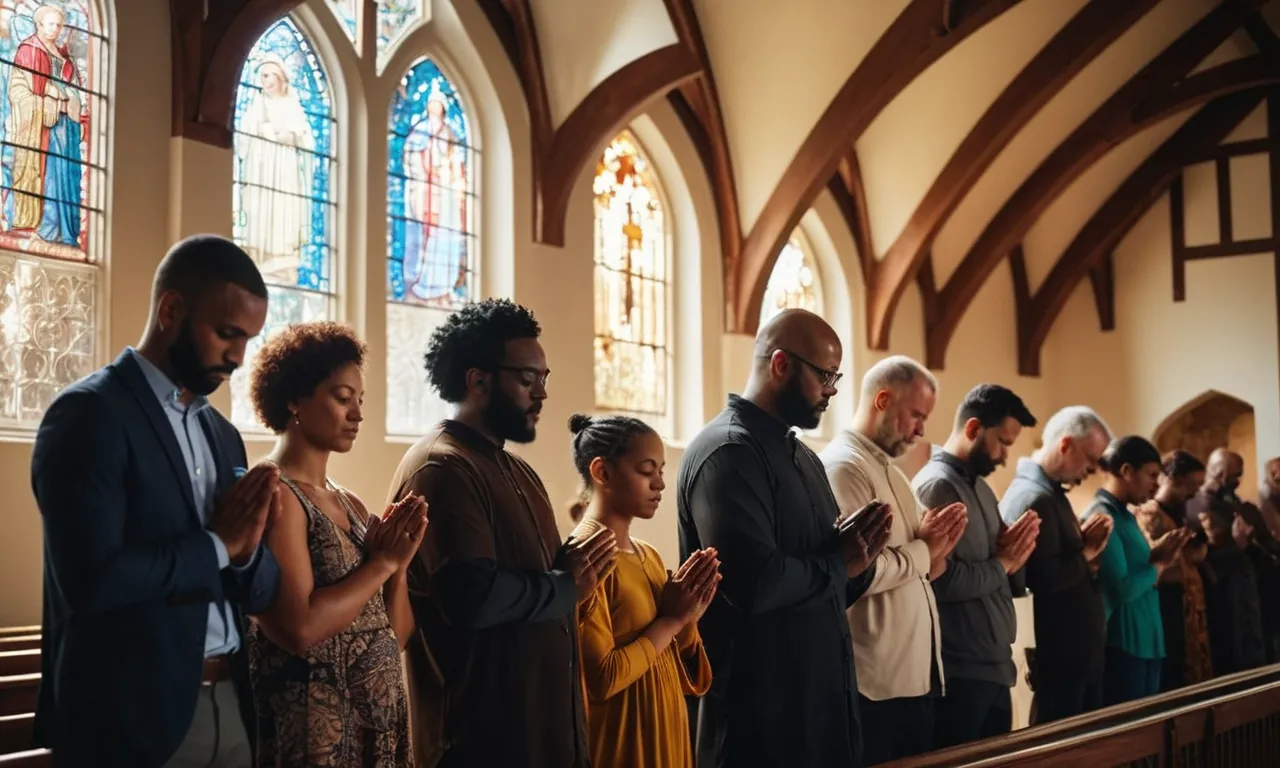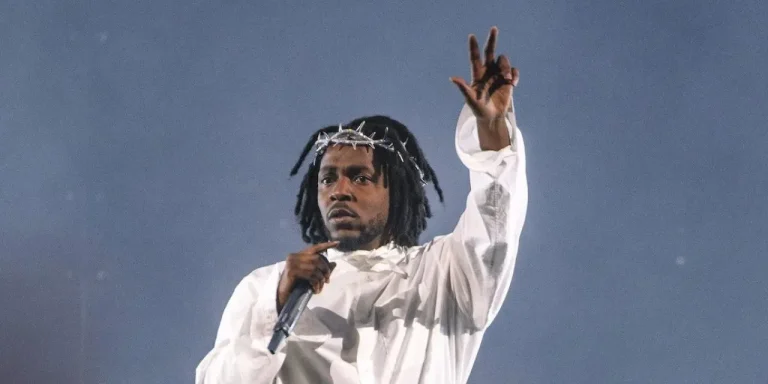Who Said “God Bless Us Everyone”? – The Origins Of A Christmas Carol’S Most Famous Line
The holiday season often brings out some of the most memorable and heartwarming quotes about charity, goodwill, and the Christmas spirit. One of the most recognizable is the line “God bless us everyone!” But where does this quotation come from originally, and who said it first?
If you’re short on time, here’s a quick answer: The line “God bless us everyone!” originates from Charles Dickens’ 1843 novella A Christmas Carol. It is spoken by the character Tiny Tim at the end of the story.
In this comprehensive guide, we will explore the origins of Tiny Tim’s iconic line, looking at Charles Dickens’ inspirations for A Christmas Carol and how he crafted the story’s most sympathy-inducing characters.
We’ll also analyze the deeper meaning and context behind the quote within the tale itself. Whether you’re a literature buff or simply curious about the backstory of this Christmas standard, you’ll find a detailed answer to “Who said ‘God bless us everyone’?” right here.
The Creation of A Christmas Carol
Charles Dickens’ Influences and Motivations
Charles Dickens wrote A Christmas Carol in 1843, during the Victorian era in England. At the time, there was a stark contrast between the lives of the wealthy and the poor. Dickens was greatly influenced by his own impoverished upbringing and wanted to shed light on the struggles of the working class.
Though A Christmas Carol is a story about the holidays, it contains strong social commentary on greed, indifference, and the exploitation of the poor.
Dickens was inspired to write A Christmas Carol after he spoke at a charity event in Manchester about educating poor children. He realized that writing a Christmas story promoting charity and compassion could have a bigger impact than simply giving a speech.
His own painful childhood experiences also drove him to critique ignorance towards the poor. When Dickens was 12 years old, his father was sent to debtors’ prison, forcing young Charles to work at a boot-blacking factory.
This firsthand experience with poverty and hardship gave Dickens special insight into the social issues of Victorian England.
In A Christmas Carol, Dickens wanted to criticize laissez-faire economics and promote charitable giving. By creating the miserly character of Ebenezer Scrooge, Dickens illustrated how obsessing over profit can harden someone’s heart.
And by showing Scrooge’s transformation through his encounters with various ghosts, Dickens proved that even the most selfish people are capable of change and compassion. The story advocates for supporting the poor, especially children.
Scrooge’s moral renewal at the end demonstrates that society benefits when the fortunate help the needy.
Developing the Character of Tiny Tim
One of the most memorable minor characters in A Christmas Carol is Tiny Tim Cratchit, the young, disabled son of Scrooge’s employee Bob Cratchit. Though Tiny Tim only appears briefly, his presence is pivotal to the story’s moral message.
Dickens used Tiny Tim to represent the social stratification of 19th century England and the hardships of impoverished, working-class families.
Dickens emphasized Tiny Tim’s frailty and disability to provoke sympathy and awareness. Tim walks with a crutch and has iron bars on his legs to help him get around. Dickens describes Tim as “a crippled little creature” and notes his condition is life-threatening.
While Tim’s family loves him dearly, they cannot afford proper medical care. His sickness is partly due to poverty and malnutrition. Tim’s predicament was common in Victorian society, where many children of the poor suffered from preventable illnesses.
After the Ghosts of Christmas help transform Scrooge into a kinder man, the book reveals that Tiny Tim miraculously does not die. Scrooge begins treating and paying the Cratchit family better. He even becomes like a second father to Tim.
This happy ending further reinforces Dickens’ message about generosity and social responsibility. Tim’s improved fate represents the benefits to society when the rich help struggling families. The character of Tiny Tim helped make the story’s moral lesson more poignant and memorable.
The Meaning and Impact of “God Bless Us Everyone!”
In-Story Analysis
The iconic line “God bless us, every one!” is spoken by the transformed Ebenezer Scrooge at the end of Charles Dickens’ 1843 novella A Christmas Carol. After being visited by three spirits that show him the error of his self-serving, miserly ways, Scrooge awakens on Christmas morning bursting with holiday cheer and goodwill towards his fellow man.
Scrooge’s exclamation expresses joy, generosity, and hope following his radical change of heart. Where once he embodied the antithesis of Christmas spirit, resenting charity and human connection, the reformed Scrooge now appreciates the deeper meaning of the season – to spread light where there is darkness and bring people together.
His blessing signifies a desire to share the gifts of Christmas with everyone, rich and poor alike.
The line powerfully conveys Scrooge’s transformation and Dickens’ message about redeeming one’s humanity. It reminds readers that we all have the capacity to change for the better if we open our eyes to human suffering and the ties that should bind us to one another, especially during the Christmas season.
Legacy as a Christmas Catchphrase
“God bless us, every one!” has become one of the most recognizable and beloved quotes from popular Christmas stories and media. According to a Literary Hub survey, it ranks among the top ten most memorable holiday catchphrases.
The line’s fame has made it a common decoration seen on Christmas cards, signs, knickknacks, apparel, and media. A testament to its cultural impact, “God Bless Us, Every One!” has graced merchandise from brands like Target, Hallmark, and Disney.
It also regularly appears in holiday films and TV episodes, including It’s a Wonderful Life, A Muppet Christmas Carol, and even The Simpsons.
Why does this quote hold such significance? It distills the transformative spirit of Christmas and Scrooge’s journey into a concise, hopeful blessing. The message resonates across generations as both a call to be kinder and bring more light into the world.
Indeed, in the over 175 years since Dickens penned his masterful words, they have become synonymous with embracing charity and goodwill – a poignant reminder of Christmas’ power to open hearts year after year.
Adaptations Cementing Its Pop Culture Status
Early Film and Stage Productions
From the moment of its initial publication in 1843, A Christmas Carol captured the public’s imagination. Within just a few years, there were multiple stage adaptations touring England and America, allowing Scrooge, Tiny Tim, and the ghosts of Christmas to come alive in front of enraptured audiences.
The early 1900s saw some of the first film versions, including a 1901 British short film that is now considered the oldest known film adaptation. These early cinematic renditions introduced new generations to the story and further embedded it into popular culture.
As film grew more advanced, so did the Carol adaptations. In 1938, MGM released a big-budget production starring Reginald Owen as Scrooge. It became a holiday favorite, still shown on TV nearly 80 years later.
Modern Reimaginings
Over the past few decades, creatives have continued putting their own original spin on the classic tale. From a comedic take with Bill Murray as Scrooge in 1988’s Scrooged, to an expanded backstory in 2000’s A Diva’s Christmas Carol starring Vanessa Williams, to an animated adventure featuring Jim Carrey’s voice in 2009’s A Christmas Carol, the story lends itself well to reinterpretation.
Some reimaginings aim to examine social issues through the lens of Dickens’ story. For example, 2020’s musical film Jingle Jangle celebrates black culture while incorporating familiar Christmas Carol themes.
2020 also saw FX’s miniseries A Christmas Carol, starring Guy Pearce as a dark, more realistic version of Scrooge. After over 175 years in print and on screens large and small, A Christmas Carol remains as relevant as ever, continuing to permeate pop culture in new and exciting ways.
Conclusion
Charles Dickens’ A Christmas Carol has become one of the most iconic holiday tales, shaping many modern conceptions of the Christmas spirit. At the heart of its warm-hearted message is Tiny Tim’s aspirational quote wishing goodwill upon all people across society – a simple but powerful sentiment that continues to move audiences over 150 years later.
So next time you hear or read those familiar words during the holiday season, remember the Dickensian origins of this now-legendary phrase. It emerged from a groundbreaking novella written to open hearts and hands ever wider to charity and human compassion.








